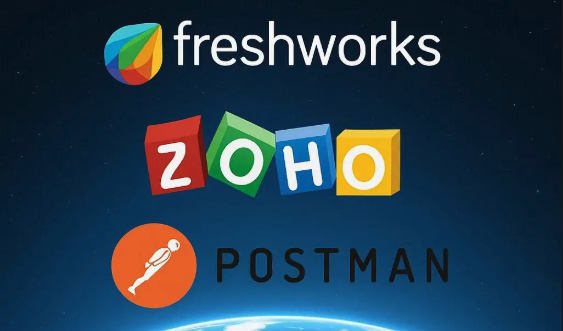The Rise of Indian SaaS | 매거진에 참여하세요
The Rise of Indian SaaS
#Business #Competitiv #SaaS #India #Freshworks #Zoho #Postman
Strategies and Differentiation in the Global Market
For the past decade, Silicon Valley has held a firm grip on the global SaaS industry.
Companies like Salesforce, Atlassian, and HubSpot defined the B2B SaaS paradigm, inspiring countless startups worldwide.
But in recent years, Indian SaaS players have been making a bold entrance onto the global stage.
Names like Freshworks, Zoho, Postman, and BrowserStack are no longer dismissed as “budget solutions from India.”
They now stand shoulder-to-shoulder with giants like Microsoft, Google, and Adobe.
So, what’s fueling India’s transformation into a SaaS powerhouse?
And what strategies set these companies apart in the global arena?

The Roots of India’s SaaS Growth
India’s SaaS boom isn’t just about “cheap labor.” It’s built on deeper foundations:
A vast talent pool:
Every year, India produces hundreds of thousands of engineers and CS graduates.
Many gain experience in Silicon Valley before returning to launch startups back home.
Cost efficiency:
Lower wages and operating costs still make India an attractive launchpad for fast-scaling SaaS ventures.
Remote-first culture:
The post-COVID embrace of remote work has made it easier for Indian firms to serve global clients and hire global talent.
A surging domestic market:
India’s own digital transformation is fueling explosive B2B SaaS demand.
Together, these factors have turned India from an outsourcing hub into a global SaaS contender.
The Playbook: How Indian SaaS Competes Globally
Indian SaaS companies typically differentiate themselves in three key ways:
1. A “Global-First” DNA
Freshworks targeted the U.S. and European markets from the very beginning, designing UI/UX to meet global standards and building strong English-based support.
Zoho, while headquartered in India, serves customers in over 180 countries.
These firms weren’t “local products going global” ,they were built for the world from day one.
2. Price-to-Value Advantage
Yes, cost is still a strength ,but it’s not just about being cheap.
Indian SaaS delivers comparable functionality at half the cost (or less), while maintaining solid quality.
Take Postman: it dominated the API collaboration market not just because it was affordable,
but because it offered a developer-friendly experience with minimal financial friction.
3. Localization and Flexibility
Zoho adapts its products to fit local tax and compliance rules.
Indian firms don’t stop at enterprise clients , they meticulously target SMBs too.
This “SaaS for every business” approach contrasts with the enterprise-heavy model of U.S. players.

The Differentiation from U.S. SaaS
While American SaaS companies retain advantages in brand, capital, and networks, Indian SaaS competes differently:
- Lean pricing:
U.S. SaaS clings to premium enterprise pricing, while Indian firms offer flexible, affordable tiers.
- Emerging markets:
U.S. SaaS is heavily focused on North America and Europe; Indian SaaS thrives in Southeast Asia, the Middle East, and Africa.
- Developer-centric models:
Postman and BrowserStack succeeded by focusing on developers (B2D), a niche largely overlooked by U.S. incumbents.
In short, Indian SaaS isn’t just a “low-cost alternative.”
It’s opening up new markets and new customer bases that U.S. companies often miss.
The Challenges Ahead
The rise isn’t without hurdles:
- Brand perception:
Some global clients still see Indian SaaS as “cheap substitutes.”
- Capital limitations:
U.S. firms raise billions; Indian companies still face relative funding gaps.
- Global support:
Managing worldwide customers and partnerships stretches resources thin.
To truly cement leadership, Indian SaaS needs to build brand trust and strengthen global partnerships.
Conclusion: Not Just Challengers, but New Leaders
It’s outdated to label Indian SaaS as merely “affordable alternatives” to Silicon Valley.
They’re emerging as new leaders with distinct strategies, combining cost innovation, developer-first design, and emerging market focus.
The SaaS landscape is shifting from a U.S.-centric monopoly to a U.S.–India–Europe tri-polar ecosystem.
And in this reshaped order, Indian SaaS isn’t just fighting back, it’s rewriting the rules.






